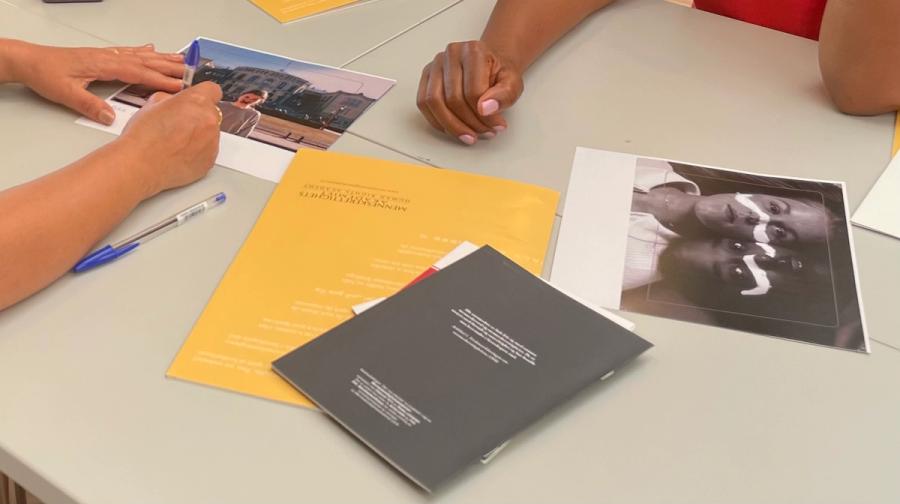Human Rights Cards
In this group work the participants will discuss questions related to pictures photographed by young students in Norway who have documented human rights issues locally and nationally in a project called Human Rights Lens.
Quick facts




Activity goals
- Learn about the international human rights system and how human rights influences national societies all over the world, including their own.
- Reflect on human rights, democratic challenges and dilemmas in their own surroundings and lives.
- Be inspired to document topics related to human rights in their immediate environment.

The pictures on the cards are from the project Human Rights Lens (HRL) in Norway where pupils in eight upper secondary schools participated. The task was to document topics related to human rights in their own surroundings. Results: local exhibitions and the website hrlens.no.
Human Rights Lens is developed by the organization “Frame”. The Human Rights Academy was a partner in the project with support from the Nordic Council of Ministers in 2019/2020.
Instructions
- The facilitator has an introduction to human rights and hand out The Universal Declaration of Human Rights (1948).
- The facilitator introduces the cards and tells the participants about the pictures: When we talk about human rights, the focus is often global. But human rights are also about our lives and our immediate surroundings. The pictures on the cards are photographed by young students in Norway who have documented human rights issues locally and nationally in a project called Human Rights Lens.
- The facilitator divides the participants into groups of four or five, and hands out 4 to 5 cards to each group. He/she must adapt the selection of cards according to the age and prior knowledge of the group. If there are many participants, several groups can receive the same card.
- The facilitator presents the task: Your group has 45 minutes to discuss and reflect upon the questions on the cards. Several of the cards also have a statement. When you discuss the statements, write down your arguments/reflections for and against each statement on the large sheet in front of you.
- In the plenary session afterwards, each group chooses one card and presents their reflections and answers related to this card (15-20 min).
- The facilitator finishes by presenting all pictures, and relevant facts about human rights and related topics (30 min).
Tips:
- If the questions do not suit the group based on age or language, you can discuss only the pictures and reflect on the topics in groups.
- If the facilitator want to emphasize a single theme, the groups can be given the same card.
Reflection
- Did you like discussing the questions on the cards?
- How can pictures create engagement and feelings?
Debriefing
By becoming parties to legally binding human rights treaties, it is the state authorities that assume obligations and duties to respect, protect and fulfill the human rights. The most important duty is to see that the national laws are in harmony with the articles in the human rights convention. The authorities can also do many other things to implement human rights: build schools and hospitals, educate the teachers and the police, inform the population, organize elections, etc.
However, even if the legal obligations belong to the state, we all have a duty to respect other peoples’ rights, to participate actively in the society, and speak out if we see somebody being discriminated.



